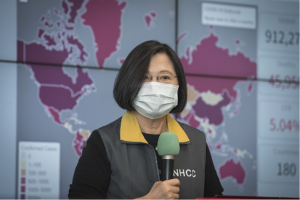This publication is in proud partnership with Project UNITY’s Catalyst Academy 2024 Summer Program.

Abstract
By 2050, 1.3 billion people are projected to be diagnosed with type 2 diabetes4. The primary drivers contributing to the disease include increased consumption of unhealthy foods and sedentary lifestyles. In order to reduce this very large number, efforts must be made to understand type 2 diabetes through a public health lens with priority placed on prevention. The objective of this paper is to analyze the national and local prevalence of type 2 diabetes, identify key social determinants of health among populations in Hopewell, Virginia, and propose the implementation of a novel community-focused intervention. To learn about the disease and its risk factors we extracted 34 relevant articles from the scientific literature using PubMed and Google Scholar. Further, we utilized key findings from interviews with relevant type 2 diabetes stakeholders in Virginia, Morris Cardiovascular Clinic and the Blue Zones Organization, to understand existing efforts and help plan future public health interventions for the Hopewell area. We found the highest-risk population in Hopewell, Virginia to be individuals of low-socioeconomic status; food insecurity and lack of education were prominent social determinants of health. Current interventions in the area have been limited in scope and inaccessible to lower-income populations. Low income populations in Hopewell tend to have low access to nutritious food options, which tend to be more expensive than healthier options. The issue is worsened by the fact that Hopewell contains food deserts – areas that lack groceries stores but possess fast food restaurants. Our findings imply the need for further community-based interventions. We propose a free-to-use online application providing easier access to healthier food options through local farmers markets. This intervention will promote improved food consumption habits and potentially reduce future rates of type II diabetes in Hopewell.
Keywords: type 2 diabetes, socio-economic determinants, nutrition, diet, lifestyle, diabetic literacy
Introduction
Type 2 diabetes is a chronic medical condition characterized by insulin resistance and resulting high blood sugar levels. It is a significant health issue worldwide. In the United States, over 37 million people live with diabetes, with type 2 diabetes accounting for approximately 90-95% of cases32. Type 2 diabetes ranks among the top ten leading causes of death worldwide, and causes numerous complications affecting various organs such as diabetic retinopathy (eye disease) and diabetic nephropathy (kidney disease). In addition, people living with type 2 diabetes have an increased risk for cancer and heart disease. In Hopewell, Virginia, the prevalence of type 2 diabetes exceeds both state and national averages due to high rates of obesity and limited access to nutritious foods, both of which are correlated with low socioeconomic status. In this literature review, we identified the socio-economic determinants of type 2 diabetes in the U.S. as well as existing public health efforts to address them, and utilized stakeholder perspectives to create an evidence-based intervention.
The Importance of a Public Health Lens
Type 2 diabetes is the 8th leading cause of death in the United States as of 202129. Limiting the onset and progression of the disease primarily requires lifestyle changes. In fact, nearly half of all Americans have one or more chronic preventable conditions linked to poor lifestyle choices28. In this paper, we use the socioecological model to analyze type 2 diabetes from five public health levels: individual, interpersonal, community, institutional, and policy. The personal level explores individual strategies for prevention and treatment. The interpersonal level extends these strategies to family and friends. The community level promotes prevention and lifestyle improvements that involve the entire community. The institutional level examines how local organizations can contribute to prevention efforts. Finally, the policy level leverages government laws and policies to drive change.
Methods
After a thorough literature review of 34, peer-reviewed journal articles and other scholarly sources, we explored risk factors for type 2 diabetes and acquired a comprehensive understanding on the disease. We focused on the determinants of type 2 diabetes in the U.S. and the current scope of prevention practices. Our plan of action was designed based on the literature review and insights from interviews conducted with 2 key stakeholders in the region (Morris Cardiovascular Clinic and the Blue Zones Organization). Our research team consists of members from New York, Virginia, New Jersey, and Maryland
National Literature Review
In 2001, it was predicted that 29 million people would have diabetes by 2050. However, the incidence of diabetes has risen dramatically over the past two decades. In 2021, a research article in The Lancet estimated that at least 1.3 billion people will be diagnosed with type 2 diabetes by 20503,4. “More than 1.7 million Virginians […] live in low-income areas with limited access to affordable and nutritious food”, nearly 18% of the population. This is more than double the national rate of 7.3 percent. Lack of access to nutritious food forces many to rely on cheap, high-sugar, and high-fat foods, leading to weight gain and insulin resistance, key risk factors for type 2 diabetes. Over 68% of adults in Virginia are diagnosed with obesity, a major risk factor for diabetes2. To address this, the Virginia Department of Health implemented program DP13-1305, known as Making a Healthier Virginia the Priority, to prevent and reduce these risk factors5. Program DP13-1305 aligned with the CDC’s goals of preventing and controlling diabetes, heart disease, obesity, and associated risk factors while promoting school health. This was done through promoting diabetes self-management education (DSME) programs, increasing access to the National Diabetes Prevention Program, and overall increasing public awareness of lifestyle modifications for chronic disease prevention.
Justification for Target Population
In our selected city, Hopewell, VA, 24% of individuals have poor general health, which is higher than the national and state average of 14%. Hopewell also has a diabetes prevalence rate of 15%, compared to the national and state average of 10%. These statistics indicate that Hopewell has some of the lowest health scores in Virginia and the US. Several factors contribute to these results, including obesity, food environment index, and education18. Obesity, a major risk factor, contributes to insulin resistance17, and Hopewell’s low food environment index of 6.3, as compared to the state average of 9.0, indicates limited access to healthy foods21. Lastly, only 52% of Hopewell adults have some college education, compared to 68% nationally and 72% statewide, indicating lower health literacy22. The city’s poverty rate is 21.3%19. Type 2 diabetes is more prevalent in lower-income and African American communities (which make up 41.9% of the Hopewell population), with African Americans having a type 2 diabetes prevalence rate of 13.2%20 (see Table 1). Overall, due to Hopewell’s high smoking and obesity rates and low food environment index and education rates, the city has a high type 2 diabetes prevalence18.

Table 1: Overview of type 2 diabetes Programs Operating in Hopewell, VA
The Socio-ecological Model
Individual: Various individual factors can contribute to the prevention of type 2 diabetes. A key lifestyle change is regular physical activity, which improves glycemic control and maintains healthy blood glucose levels, preventing diabetic complications6. Regular physical activity is beneficial7, however it is often difficult for low-income individuals to make time for physical activity while working extra jobs to make ends meet11. Healthy eating is another crucial factor, as highly processed diets can contribute to blood sugar spikes8; such diets are more common in low-income communities due to reliance on cheap, high-fat foods. Food insecurity also causes chronic stress, which is linked to insulin resistance, depression, and anxiety, reducing the likelihood of exercise9. Hence, people living in low income and poverty stricken areas have a 50% higher risk of developing type 2 diabetes10.
Interpersonal: There are numerous ways to inform family and friends about the risks of diabetes. Social support plays a significant role in warning about pre-diabetes and adhering to diabetes treatment plans12. A study in the Journal of Diabetes Research found that individuals with strong family support are 1.6 times more likely to maintain glycemic control compared to those without support13. Moreover, The International Journal of Environmental Research and Public Health found a significant positive relationship between Social Support for Physical Activity (SSPA) and actual physical activity14. Additionally, social media can be used to share community-based programs, support groups, and other resources for diabetes education15.
Community: At a community level, multiple events have been organized to promote prevention of type 2 diabetes. For example, the establishment of farmers markets in communities simultaneously serves as a nutritious food outlet and community center, reducing the health effects of low income in the area24. Furthermore, community exercise programs are a beneficial community strategy; high daily activity levels are a major lifestyle aspect of type 2 diabetes reversal. However, as most type 2 diabetics are 45 years and above, it can be difficult to exercise regularly with added health issues due to old age25. Implementing community-based exercise programs provide a low-cost method for older people and underserved communities to participate, potentially improving cardiovascular health. Overall, both farmers markets and community exercise programs can transform the lifestyle of individuals and decrease type 2 diabetes risk for a whole community.
Organizational: There are various organizational factors that can affect how individuals manage or prevent type 2 diabetes. Through general social support and establishing new social norms, workplaces help reduce the prevalence of type 2 diabetes and promote healthy behaviors27. One umbrella review has found that the effects of these organizational factors in programs promoting lifestyle management has reduced the risk of developing type 2 diabetes by 58% in adults26. Although organizational factors do positively affect individuals, the precedence of sedentary lifestyles serves as an organizational barrier.
Policy: To ensure effective type 2 diabetes interventions, government policies must utilize resources holistically. A feasible solution under the current healthcare landscape is to widen patient insurance options to ensure affordability for lower-income individuals. Such implementations will be effective, as increased access to health insurance decreases the odds for undiagnosed type 2 diabetes in adults23. Importantly, government policy should be integrated in a manner which ensures compatibility with current healthcare standards, while limiting the financial burden on current patients.
Stakeholder Perspectives
Dr. Morris, owner of Morris Cardiovascular Clinic in Hopewell, VA, cited lifestyle changes as the most effective prevention tactic against type 2 diabetes. Dr. Morris implements this strategy through his clinic’s partnership with the Hopewell Farmers Market; patients are provided with discounts and incentivized to purchase from the farmers market. Dr. Morris explained its contribution to the development of a proactive prevention strategy that promotes healthy lifestyle changes.
We also interviewed Mr. Sam Skemps, a director at Virginia’s Blue Zones, an organization dedicated to addressing unhealthy lifestyle habits at the community level. In our interview, Mr. Skemps discussed Blue Zones’ initial testing of AI tools for data collection. Likewise, Dr. Morris mentioned the plan to develop an app connected to the Hopewell Farmers Market to further incentivize individuals in the Hopewell community to create a habit of visiting the market. With the input of Dr. Morris, we’ve decided to help design an app which provides a rewards system with the Hopewell Farmers Market. Moreover, addressing the issues identified in our literature review, the app will provide type 2 diabetes patients with resources to combat transportation barriers and nutritional advice to provide further education.
Digital Health Solutions
The Quintuple Aim model is a framework for improving healthcare and medical conditions that focuses on five goals: improving population health, enhancing patient experiences, reducing costs, improving healthcare providers’ experiences, and advancing health equity. This model is a framework for improving type 2 diabetes care and prevention by combating health inequities with solutions that go beyond the traditional healthcare process. As digital health solutions become more prevalent with the advent of AI, it is crucial to leverage such tools to improve these targeted goals.

Table 2: The Quintuple Aim Model and Benefits of Digital Health Integration
Plan of Action
Target population, Goals, and Objectives: Our intervention will be focused on adults of low socio-economic status in the Hopewell community.We aim to improve nutritional and dietary habits, and will do so through a partnership with the Hopewell Farmers Market, incentivizing individuals to buy fresh produce. We aim to increase adult fruit and vegetable purchases by at least 65%, and ensure that at least 90% of the individuals participating in the farmer’s market rewards program show improvements in their physical activity levels.
Interventions: We will design a mobile app that offers a rewards program for visitors to the Hopewell farmers market and provides a vetted hub for nutrition information and two-way communication between type 2 diabetes patients. This application will promote type 2 diabetes awareness, encourage lifestyle changes, and prevent further cases of type 2 diabetes within the Hopewell Community. Local Hopewell citizens will gain points as they buy more produce at local farmers markets, and as the points accumulate they will be given the opportunity to use their points in the form of rewards such as coupons or free products. Due to the opportunity of being able to gain benefits from this app, individuals will be more motivated to spend in farmers markets compared to unhealthy options, promoting healthy, nutritious lifestyles.
Timeline: We have developed a 12 month plan of action for this intervention. In January, the project will focus on a survey collection of Hopewell residents’ desired outcomes to ensure we develop a successful intervention. This survey will ask about consumer experiences with previous applications, such as how satisfied they are with those services and what they wish to see that they haven’t seen before. For example, residents may wish for a clearer application format as previous ones were confusing to them, or they wish to have more of a community based application which focuses on events happening around them. We will also ask users about their perceived change in health while using our application. This will provide us with ample knowledge to gauge the success of our intervention.
During February, we will focus on developing and sending to our stakeholders, Blue Zones, Morris Cardiovascular Clinic, and ultimately the Hopewell Farmers Market, our finalized intervention plan, as well as researching potential funding strategies. Then in the month of March we will focus on large-scale outreach to Virginia-based health organization stakeholders, such as Virginia Rural Health Association, and the Virginia Health Care Foundation. Other potential stakeholders that will be contacted during this time include volunteer app-development nonprofits to limit project spending during the development stage. These nonprofits could include partnering with other student-led organizations with coding experience; for example, HerSTEMSpace, another student-led nonprofit we’re thinking about collaborating with as they have coding skills with similar goal alignments.
The next few months, April to November, will be focused on app development and preparation for product testing with a sample of individuals that are at risk for diabetes or are already seeking diabetes treatment. A marketing campaign will also be launched in the community to raise awareness about our project; this campaign would be implemented through social media advertising with the Hopewell Farmers Market, and partnering with local medical centers to spread the word. In December, we will beta test the app with a target group. After analyzing findings from beta testing, final adjustments to the app will be made accordingly. Afterwards, we’ll continue to actively collaborate with the Hopewell’s Farmers Market and the Morris Cardiovascular clinic to create a rewards program plan; this plan will be tailored to our interventional goals and the needs of the Hopewell residents. Currently, we’ve already been in contact with these two organizations, further communication is needed to then solidify a final plan for how we plan to initiate a rewards program. Following the beta testing stage, we aim to publicly launch the application prior to the end of 2025.
Resource Allocation and Evaluation & Monitoring: In order for the intervention to be successful, we require funding from stakeholders. Morris Cardiovascular Clinic and Blue Zones have already provided their verbal agreement to aid in funding; these organizations will be our central sponsors. In order to measure the effectiveness of this intervention, we must analyze the data taken from consenting users about the state of their dietary health before and after using the app. Moreover, progress can be determined at a community level by tracking the increased purchases of fruits and vegetables before and after the intervention. Monthly meetings with key stakeholders will ensure our intervention remains sustainable.
Project UNITY Support: Over the summer, our group participated in Project UNITY’s Catalyst Academy program, where we designed this intervention and decided to execute it. Project UNITY can help support this intervention by offering publicity through their digital media platforms to help gain traction of our app as well as possible funding. Furthermore, we can establish an advertising agreement with Project UNITY in exchange for financial support and collaboration on future developments.
Strengths & Limitations
One of the strengths of our intervention plan is that there is a targeted focus on the community of low-income adults in Hopewell, where there is a clear prevalence of diabetes due to food insecurity. Moreover, we have quantifiable objectives, such as increasing fruit and vegetable intake by 65% and improving physical activity levels in 90% of participants, allowing for clear evaluation of success. Further, our digital rewards program aligns with current technological trends, increasing the likelihood of user engagement.
A limitation of our intervention is the high upfront cost required to implement a successful application. The development of a sophisticated app will require delegation of tasks to organizers, app developers, and farmers market representatives. This system will require extensive development and consistent communication between farmers market representatives and app developers. To successfully address the limitations of this intervention, effective project delegation and stakeholder communication will be necessary.
Conclusion
Type 2 diabetes is a significant public health issue affecting millions in the US; current efforts should focus more on education, surveillance, and prevention31. Underserved communities face special challenges such as food insecurity, limited transportation, and inadequate education, increasing their susceptibility to type 2 diabetes. Despite existing strategies, underserved populations are often overlooked in diabetes prevention and education initiatives.
Our intervention plan in Hopewell, Virginia, supported by Morris Cardio Clinic and the Hopewell Farmers Market, will serve a targeted population of low-income adults through tailored financial and educational efforts. The intervention involves the development of a community-oriented online application which encourages healthier diet by incentivizing individuals to visit farmers markets through coupons and gamification. This project will holistically improve health in the target population by leveraging digital health advancements to reduce individual food costs.
Type two diabetes is exacerbated by inadequate eating habits and unhealthy lifestyle choices. These issues are particularly prevalent in Hopewell, VA, which has a relatively high diabetes prevalence, low health literacy, and limited access to nutritional foods compared to the rest of the state and national population. Our app initiative will help to decrease type 2 diabetes prevalence and improve type 2 diabetes outcomes by providing a local farmers market rewards program. In the future, if successful on the local scale, our intervention can be expanded to communities nationwide, creating a health-promoting ecosystem.
References
- The Burden of Diabetes in Virginia. (2018). https://diabetes.org/sites/default/files/2023-09/ADV_2023_State_Fact_sheets_all_rev_Virginia.pdf
- Joint Commission on Health Care. (2023). Obesity and Eating Disorder report. https://jchc.virginia.gov/documents/Obesity%20and%20Eating%20Disorder%20report.pdf
- Boyle, J., Honeycutt, A. & Narayan, K. M. V. (2001).. diabetesjournals.org https://diabetesjournals.org/care/article/24/11/1936/24758/Projection-of-Diabetes-Burden-Through-2050Impact.
- Ong, K. L. et al. (2023) Global, regional, and national burden of diabetes from 1990 to 2021, with projections of prevalence to 2050: a systematic analysis for the Global Burden of Disease Study 2021. The Lancet 402.
- Virginia Department of Health. (2013). Making A Healthier Virginia THE PRIORITY. https://www.vdh.virginia.gov/content/uploads/sites/65/2018/06/5-YearSummaryReport2018.pdf
- Hu, F. B. et al. (2001). Diet, Lifestyle, and the Risk of Type 2 Diabetes Mellitus in Women. New England Journal of Medicine 345, 790–797
- Zoltan Ungvari, Fazekas-Pongor, V., Csiszar, A. & Kunutsor, S. K. (2023). The multifaceted benefits of walking for healthy aging: from Blue Zones to molecular mechanisms. GeroScience 45.
- Ludwig, D. S. (2002). The Glycemic Index. JAMA 287, 2414
- Wolfson, J. A., Garcia, T. & Leung, C. W. (2021). Food Insecurity Is Associated with Depression, Anxiety, and Stress: Evidence from the Early Days of the COVID-19 Pandemic in the United States. Health Equity 5, 64–71.
- Hsu, C.-C. (2012) . Poverty Increases Type 2 Diabetes Incidence and Inequality of Care despite Universal Health Coverage. Diabetes Care 35, 2286–2292.
- Withall, J., Jago, R. & Fox, K. R (2011). Why some do but most don’t. Barriers and enablers to engaging low-income groups in physical activity programmes: a mixed methods study. BMC Public Health 11.
- van Dam, H. A. et al (2005). Social support in diabetes: a systematic review of controlled intervention studies. Patient education and counseling 59, 1–12.
- Olagbemide, O. J. et al. (2021). Family Support and Medication Adherence among Adult Type 2 Diabetes: Any Meeting Point? Annals of African Medicine 20, 282–287
- Smith, G. S. E., Moyle, W. & Burton, N. W. (2023). The Relationship between Social Support for Physical Activity and Physical Activity across Nine Years in Adults Aged 60–65 Years at Baseline. International Journal of Environmental Research and Public Health 20, 4531.
- Fisher, E. B. et al. (2012). Peer Support For Self-Management Of Diabetes Improved Outcomes In International Settings. Health Affairs 31, 130–139.
- Xie, X., Liu, Q., Wu, J. & Wakui, M. (2009). Impact of cigarette smoking in type 2 diabetes development. Acta Pharmacologica Sinica 30, 784–787.
- Klein, S., Gastaldelli, A., Yki-Järvinen, H. & Scherer, P. E. (2022). Why Does Obesity Cause diabetes? Cell Metabolism 34, 11–20.
- County Health Rating & Roadmaps (2024). Hopewell City, Virginia | County Health Rankings & Roadmaps. www.countyhealthrankings.org https://www.countyhealthrankings.org/health-data/virginia/hopewell-city?year=2024.
- DATAUSA (2022). Hopewell, VA | Data USA. datausa.io https://datausa.io/profile/geo/hopewell-va
- Rodríguez, J. E. & Campbell, K. M. (2017). Racial and Ethnic Disparities in Prevalence and Care of Patients With Type 2 Diabetes. Clinical Diabetes 35, 66–70.
- County Health Rankings and Roadmaps (2024). Food Environment Index | County Health Rankings & Roadmaps. www.countyhealthrankings.org https://www.countyhealthrankings.org/health-data/health-factors/health-behaviors/diet-and-exercise/food-environment-index?year=2024
- Hickey, K. T. et al. (2019). Low health literacy. The Nurse practitioner 43, 49–55
- Mahoney, S. et al. (2020). Health Insurance Is Associated with Decreased Odds for Undiagnosed Prediabetes and Type 2 Diabetes in American Adults. International Journal of Environmental Research and Public Health 17, 4706
- Institute for Functional Medicine. Farmers Markets: Helping to Address the Growing Problem of Food Insecurity (2022). The Institute for Functional Medicine https://www.ifm.org/news-insights/farmers-markets-helping-address-growing-problem-food-insecurity/.
- Carrillo‐Larco, R. M., Wilmer Cristobal Guzman‐Vilca, Xu, X. & Bernabé‐Ortiz, A (2023). Mean age and body mass index at type 2 diabetes diagnosis: Pooled analysis of 56 health surveys across income groups and world regions. Diabetic Medicine 41.
- Wnuk, K. et al. (2023). Workplace Interventions for Type 2 Diabetes Mellitus Prevention—an Umbrella Review. Current Diabetes Reports 23, 293–304.
- Schaller, A., Stassen, G., Lukas Baulig & Lange, M (2024). Physical activity interventions in workplace health promotion: objectives, related outcomes, and consideration of the setting—a scoping review of reviews. Frontiers in public health 12.
- U.S Department of Agriculture. The Healthy Eating Index: How Is America Doing? www.usda.gov https://www.usda.gov/media/blog/2016/03/16/healthy-eating-index-how-america-doing (2016).
- American Diabetes Association (2021). Statistics About Diabetes | ADA. diabetes.org https://diabetes.org/about-diabetes/statistics/about-diabetes#:~:text=Diabetes%20was%20the%20eighth%20leading.
- Mayo Clinic (2023). Type 2 diabetes. Mayo Clinic https://www.mayoclinic.org/diseases-conditions/type-2-diabetes/symptoms-causes/syc-20351193
- deMolitor, L., Dunbar, M. & Vallis, M (2020). Diabetes Distress in Adults Living With Type 1 and Type 2 Diabetes: A Public Health Issue. Canadian Journal of Diabetes 44.
- Eyre, H. et al. (2004). Preventing Cancer, Cardiovascular Disease, and Diabetes. Circulation 109, 3244–3255
- Cleveland Clinic (2023). Type 2 Diabetes: What is it, Causes, Symptoms, Risk Factors & Treatments. Cleveland Clinic https://my.clevelandclinic.org/health/diseases/21501-type-2-diabetes
- Venkat Narayan, K. M., Gregg, E. W., Fagot-Campagna, A., Engelgau, M. M. & Vinicor, F (2000). Diabetes — a common, growing, serious, costly, and potentially preventable public health problem. Diabetes Research and Clinical Practice 50, S77–S84
Related Posts
The Effects of Affirmative Action on Healthcare Diversity
This publication is in proud partnership with Project UNITY’s Catalyst...
Read MoreAre We Driving Our Dogs Sick Through Our Urban Lifestyles?
Figure 1: Allergic disorders in humans and dogs are associated...
Read MoreInvestigating Obstructive Sleep Apnea (OSA) in African and Latin Americans from Chicago
This publication is in proud partnership with Project UNITY’s Catalyst Academy 2024...
Read MoreTrust: The Essence of Good Policy Implementation
Figure 1 President Tsai Ing-wen inspects the Central Epidemic Command...
Read MoreBetter Zoning Through Inter-city Cooperation
Figure: High Density Housing (Source: Geograph Britain and Ireland, Author:...
Read MoreMind Missing Out? Fear of Missing Out and the Brain
Figure: A person scrolling through news articles on their smartphone....
Read MoreHaitam Boukheraz, Kei Lam, Anya Mathew, Abigail Wu, Sara Melese






